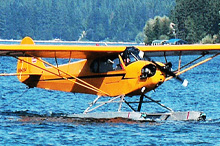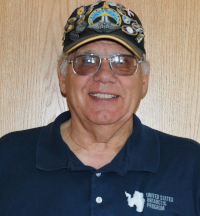No products in the cart.
Rough Water Landing

A Floatplane Challenge
By Matthew Nelson
In July 2004, I went to Idaho to complete my rating as a floatplane pilot that I had started in Alaska in 2002. It doesn’t take most pilots thirty-eight hours in eleven different floatplanes flown in a half-dozen states over two years to earn the Aircraft Single Engine Sea (ASES) rating, but that’s what it took me. I caught an airline flight to Boise and then drove to Coeur d’Alene. My objective was to train for my rating with Mike Kincaid, who was then the owner and instructor of Mountain Lakes Seaplane Company. I had read about Mike in flying magazines.
When I reached Hayden Lake, I waited for another student and Mike to return in his 1946 Piper J-3 Cub, which I also would be flying. Meanwhile I chatted with yet another student, a Hollywood stuntman. The man who was flying the plane with Mike piloted a business jet that traveled worldwide. I later learned that Mike also was teaching floatplane flying to a former U-2 pilot. [Editor’s note: Mike Kincaid has written numerous stories for IDAHO magazine, often about flying.] During the time I spent with him, he told me about the twenty years he flew in Alaska as a state trooper. I later read all three novels Mike has written based on actual events during his Alaska years.
When it was my turn to fly, I was at the controls and Mike sat in the Cub’s back seat. Its original 65-horsepower engine had been replaced with a 100-hp engine, but with two people on board and the weight of the floats, it still seemed a bit underpowered to me. We practiced the standard things in float flying, such as smooth water and rough water takeoffs and landings, and I had a blast. My throat was as dry as cotton and my techniques were rusty but the exhilaration of floatplane flying had not diminished. Mike was patient with me, and after several splash-and-dash landings and takeoffs on the water, my hour of flying time was over too soon.
This content is available for purchase. Please select from available options.
Purchase Only
Purchase Only

